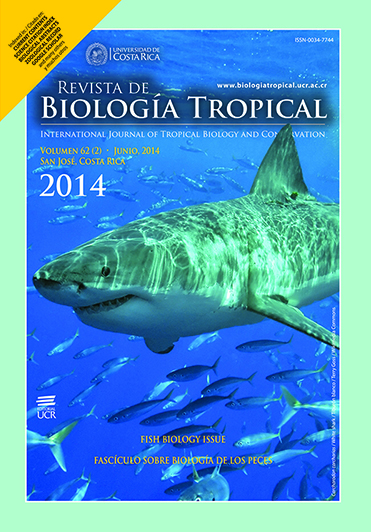Abstract
Movement and exchange of individuals among habitats is critical for the dynamics and success of reef fish populations. Size segregation among habitats could be taken as evidence for habitat connectivity, and this would be a first step to formulate hypotheses about ontogenetic inter-habitat migrations. The primary goal of our research was to find evidence of inter-habitat differences in size distributions and density of reef fish species that can be classified a priori as habitat-shifters in an extensive (~600km2) Caribbean shelf area in NW Cuba. We sampled the fish assemblage of selected species using visual census (stationary and transect methods) in 20 stations (sites) located in mangrove roots, patch reefs, inner zone of the crest and fore reef (12-16m depth). In each site, we performed ten censuses for every habitat type in June and September 2009. A total of 11 507 individuals of 34 species were counted in a total of 400 censuses. We found significant differences in densities and size compositions among reef and mangrove habitats, supporting the species-specific use of coastal habitats. Adults were found in all habitats. Reef habitats, mainly patch reefs, seem to be most important for juvenile fish of most species. Mangroves were especially important for two species of snappers (Lutjanus apodus and L. griseus), providing habitat for juveniles. These species also displayed well defined gradients in length composition across the shelf.
Comments

This work is licensed under a Creative Commons Attribution 4.0 International License.
Copyright (c) 2014 Revista de Biología Tropical






